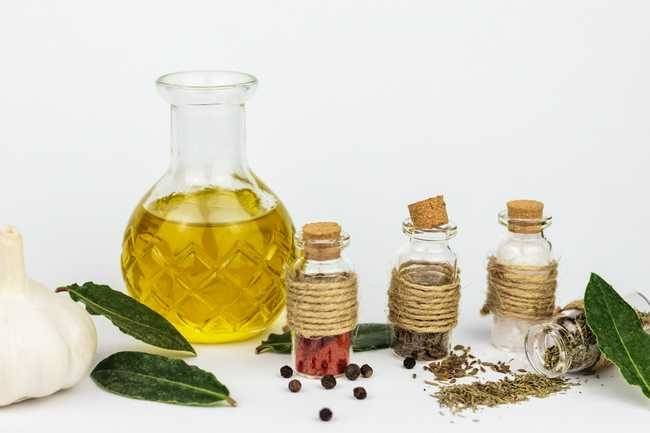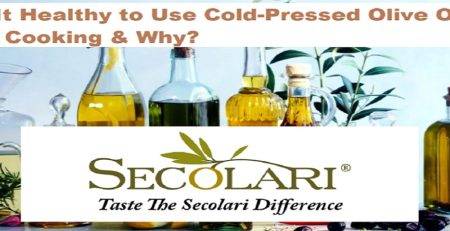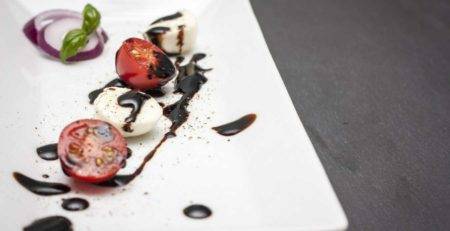Fused vs. Infused Olive Oil: What’s the Difference?
People have been cooking with olive oil since the 4th or 5th century BCE. In other words, it’s been a staple in Mediterranean cooking and world cuisine for thousands of years.
Since then, olive oil has evolved from its basic form. Now there’s extra virgin, cold-pressed, and refined. It even comes in enticing flavors like lemon and herb.
Fused olive oil is beautifully perfumed when made right, and it can make a dish, dip, or dressing superb — It has a more intense flavor. Infused oil, on the other hand, is more subtle and is easy to make at home. It means the difference between olive oil that’s the star of the show or one that has a supporting role.
Fused olive oil plays a starring role in a variety of dishes such as garlic roasted eggplant dip, broiled fish marinades, and greek dressings. Drizzle it over your favorite entree or dip fresh, crusty bread into it for an amazing appetizer.
You may be wondering if you should use fused vs infused olive oil. What are their differences and benefits? Read on to learn more.
Fused vs Infused Olive Oil
Both are flavored olive oils, meaning they carry additional oil from other plants. Examples include Eureka Lemons, Blood Oranges, Chaabani Peppers, garlic, rosemary, or basil. You’re using the “essential oils” of the additional produce.
The main difference between fused and infused olive oil is how they are processed — how that secondary flavor is added.
What Is Fused Olive Oil?
In Italy, fused oils are known as “Agrumato oils”. Fused oils offer a combination of flavors in the truest sense, and are created by crushing ripe olives along with their flavor counterpart. This is called the Agrumato Method.
Examples of plants that can contribute are chilies, herbs, or citrus fruits. The extraction of these oils married with that of ripe olives yields a product with a rich, intense flavor profile. Lemon fused olive oil, for example, can be used when baking sweets like biscotti, cake, granola, and cookies.
If that wasn’t enough, each combination also offers its unique health benefits by way of antioxidants.
The shelf life of a fused oil is around six months, however, some can last over a year! Using a citrus oil infusion can extend this.
What Is Infused Olive Oil?
In the purest sense, an “infusion” involves a solvent — such as alcohol, oil, or water. Here, we’re using olive oil. The infusion of the other flavors occurs after pressing occurs.
Makers use fresh extra-virgin olive oil and infuse it with essential oils and other botanical extracts of herbs and/or other products after it’s been pressed. These ingredients don’t necessarily need to be fresh.
Infused olive oil is great for making beauty products such as lotions, creams, and other scented products like perfumes. This is a wonderful ingredient for bath scrubs or soaps as well.
There are many health benefits, each unique to the ingredients used. The longer the ingredients sit in the container together, the stronger the infusion.
The Production Process
In Italy, fused olive oils are called Agrumato oils. The word agrume means citrus in Italian. The traditional process involves mechanically cold-pressing ripe olives with fresh citrus. That’s why it’s known as the Agrumato Method.
Traditionally, Agrumato oils come in three flavors including lemon, orange, and tangerine. But, many makers have adapted the process to include fresh herbs or vegetables instead of the traditional citrus.
Fused oils require planning to make because the ripe olives and fresh produce have to be in the same place at the same time. The makers also need to press the oils within a few hours of the harvest.
Infusion is a much more relaxed process because makers can infuse olive oil at any time. In fact, you can even do it yourself at home.
Fusion is a time-sensitive and time-consuming process, while the infusion process is less so and requires less experience.
Fused Oil Production
Agrumato oils, or fused oils, were traditionally lemon, tangerine, and orange (basically any citrus fruit). But times have changed and many makers have been incorporating fresh herbs and produce as we mentioned above.
These require planning because timing is everything here. Olives need to be ripe at the same time produce is fresh and ready. Crushing must happen within a few hours after harvest.
To create “fused oil”, makers mechanically press the ripe olives along with the produce. Their oils combine during mixing which fuses them together. This results in an intense flavor; More of the actual produce is still within the product.
Fusion oils are of very high quality. They work very well as finishing oils, as the flavor profiles are more pronounced.
Many olive oil businesses still use ancient, 5,000-year-old production methods — the methods being respected and only altered only where needed. Not only does it result in superior quality (many would argue), but is a source of great pride for them. Larger companies may form alliances with smaller regional mills for this reason.
Fused oil is usually more pricey, but usually high-quality.
Infused Oil Production
Infusion, on the other hand, is a more relaxed process. You can infuse oil at any time, which is why it’s possible to do this at home yourself with little experience. Simply pour your fresh olive oil into any type of glass container with a lid and follow these instructions.
Simply place your herbs, for example, in your jar, filling it up to the top. Then gently pour in enough olive oil to cover the herbs, right up to the brim. Cover the container with your lid, shake the container a little, and then let it sit for 3-6 weeks in a cool place.
Tip: Using fresh oil along with a dry, tinted glass container will extend the shelf life.
Infused oils offer a much more subtle flavor. That’s what makes them great for marinades or baking. The base olive oil isn’t always as high quality as it is with fused oils, but that’s what makes them more budget-friendly.
Flavor Profile and Uses
Fused oil has a very intense flavor because the produce is actually a part of the finished product. That’s why they make great finishing oils.
Because it’s much more challenging to make, fused oil is usually more expensive. But, you’ll also be getting a very high-quality olive oil.
Infused oils offer a much more subtle flavor. That’s what makes them great for marinades or baking. The base olive oil isn’t always as high quality as it is with fused oils, but that’s what makes them more budget-friendly.
Experiment With Both Fused and Infused Olive Oil
Whether it’s on your bread or in your bath bomb, fused and infused olive oil can awaken your senses. The range of intensity is vast — The flavors and aromas of these beautiful gifts from nature combine to bring us something so ancient, yet so new for some.
Use the blood orange fused olive oil in your brownies, or use cilantro infused oil to cook eggs for your breakfast burrito in the morning. Let its natural balance give you more time to sip your wine in the kitchen as it can replace the time-consuming act of measuring spices.
Explore the personalities of many combinations and intensities when experiencing fused vs infused olive oil. Participate in tastings and meet the makers. Let it be your new lifetime hobby — Hop on a plane to Italy or Greece and experience its creation first-hand.
At Secolari, we only sell fused flavored oils so you’ll enjoy the richest and freshest flavors. Check out our complete selection of high-quality flavored olive oils today.












Comments (2)
[…] https://www.secolarievoo.com/fused-vs-infused-olive-oil-whats-the-difference/ […]
[…] https://www.secolarievoo.com/how-to-identify-a-high-quality-extra-virgin-olive-oil-evoo/ https://www.secolarievoo.com/the-ultimate-guide-to-flavored-olive-oils-for-dressing-and-cooking/ https://www.secolarievoo.com/why-california-olive-oil-is-the-best-and-healthiest-type-of-olive-oil/ https://www.secolarievoo.com/frying-with-olive-oil-taking-your-dish-to-the-next-level/ https://www.secolarievoo.com/cold-pressed-olive-oil-what-it-is-and-why-youll-love-it/ https://www.secolarievoo.com/fused-vs-infused-olive-oil-whats-the-difference/ […]